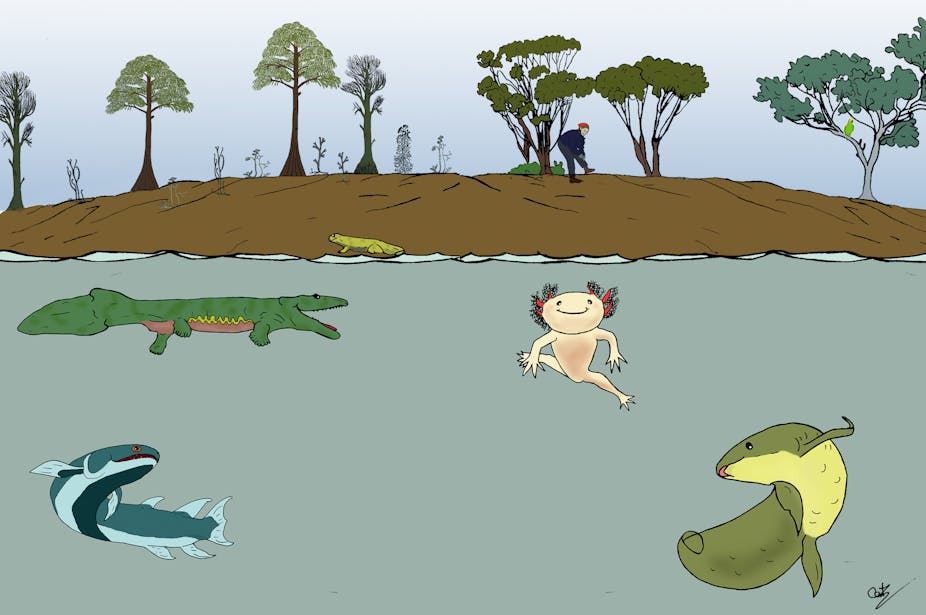Around 395 million years ago, the first tetrapod (four-legged animal) wandered out of its watery home and stepped onto land. This was made possible by the evolution of weight-bearing hips consisting of hipbones (ischium) and a connection through the spine, called the ilium.
But these weren’t present in the fish ancestors of tetrapods, and how this important transition occurred has long puzzled scientists - until now.
Our study, published earlier this year in the journal Evolution and Development, pieced together the transition from simple fish hip to a weight-bearing, terrestrial pelvis.

One issue was that the ischium seems to be a completely new structure in tetrapods and transitional fossils such as the ancient fish Panderichthys. Existing around 380 million years ago, Panderichthys did not have an ischium, despite displaying evolutionary transitional characters in the head and limbs.
Another issue was that the acetabulum (leg socket of the hipbone) of tetrapods point out towards the side, whereas in fish, it is towards the back (shown in the illustration above). The tetrapod transition would have required a sudden reorientation of the hip joint and evolution of a new structure, both appearing quite suddenly in the fossil record with little intermediate development.
In order to explain this transition, we looked towards the development of species alive today to provide answers.
Lungfish and axolotls
The development of lungfish and axolotls, the most closely related living species to fish and tetrapods, can provide insights into evolution as differences between the two provide a snapshot of what and how parts have changed.

The Australian lungfish is the most closely related living lobe-finned fish to our tetrapodomorph fish ancestors (a fish with the same limb bones as us). Native to the Mary and Burnett river systems in southeast Queensland, they can live out of water for a few days if their skin is kept moist.
As its name suggests, the lungfish has a single lung - a long sac along the length of the body cavity - which supplements its usual gas exchange through its gills. The Australian lungfish is the only lungfish species in the world which is also a facultative air breather (it only breathes air if necessary; otherwise, it relies on its gills for oxygen).
And on the other side of hip evolution, and often erroneously called a walking fish, the axolotl is actually a type of salamander. Like lungfish, axolotls are able to gulp air into their lungs if necessary. While it is a relatively simple member of the amphibian class, it has very well-developed legs, as you can see from the video below.
Look to the limbs
Both lungfish and salamanders also retain pelvic morphologies similar to that of fossil forms bracketing the transition - lungfish beforehand, and salamanders afterwards.
Comparing the development of the bones, we noticed that the acetabulum was the first part of the pelvic skeleton to develop. From that, the ischium developed from cells from the pubis (the front of the pelvis) being allowed to migrate back toward the tail.

Because muscle attachment and loading on the skeleton affect cartilage and bone development, we also looked at the development of muscles around the pelvis. We first found adult muscle equivalents for two species of lobe-finned fishes and one species of salamander, based on dissections.
From this, we found fewer differences than previously thought in the musculature of a lungfish compared to a salamander, and that similar muscles present in both species originated on the pubis in lungfish but originated on the ischium in salamanders.
These muscles also developed roughly in the same order and at the same time.
In other words, we showed the transition from a simple fish hip to that of a complex weight-bearing one could be done in a few developmental steps, and that most of the key elements for the transformation of our hips as we waddled onto land were already present in our fish ancestors.
Further reading:
They came from the sea: the gene behind limb evolution

